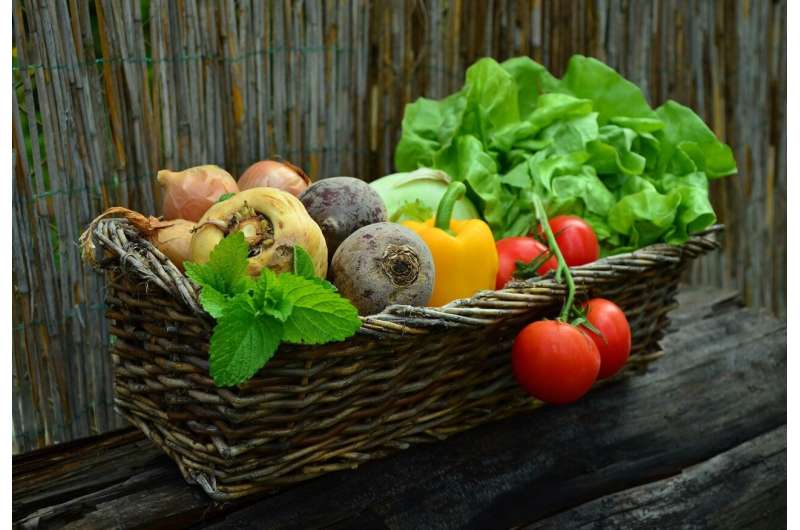This article has been reviewed according to Science X's editorial process and policies. Editors have highlighted the following attributes while ensuring the content's credibility:
fact-checked
trusted source
proofread
Report examines Michigan families' experience with food access and assistance, outlines changes for improved support

Each year, hundreds of thousands of Michigan parents worry about whether they can afford to feed their children. Increased food prices, the state's housing crisis, and the end of COVID-era financial support have all led to more Michigan families experiencing food insecurity today than before the pandemic. Now, a new report led by the University of Michigan School of Public Health details the firsthand experiences of these families; their challenges signing up for food assistance, the stress and shame of having to ask for help with food, and parents' deep commitment to making sure their children are fed—even if it means that they go without.
Called "Feeding MI Families: Michigan Families' Lived Experience of Food Access and Food Assistance," the report describes the findings of the Feeding MI Families community-based participatory research project, which has engaged nearly 1,300 parents from urban and rural communities across the state. The goal of the project is to amplify the lived experience of food insecurity in order to spur improvements in federal, state, and local food systems so they work better for families.
Feeding MI Families was established in 2021. In 2022, Feeding MI Families expanded to include families from the state's 57 rural counties. Rural communities often have food insecurity rates comparable to urban areas. According to the report, 22% of children in Michigan's Wayne and Roscommon counties are food-insecure.
"While we think that living in Michigan's Upper Peninsula could not be more different than living in Detroit, over and over, we heard the same challenges when it comes to buying food, whether it be lack of transportation, high food prices at local grocery stores, or not being able to find brands that can be purchased with WIC benefits," says Kate Bauer, director of Feeding MI Families and an associate professor of Nutritional Sciences at Michigan Public Health. "While the solutions to these challenges may differ based on location, families' needs and wants are the same."
Feeding MI Families approach: We're listening; we're learning
Aligning with the project's motto, "We're Listening. We're Learning," Feeding MI Families gathered parents' experiences through text message-based surveys and in-depth phone interviews offered in English and Spanish. Parents were asked to share their perspectives on formal and informal food assistance programs, including:
- Supplemental Nutrition Assistance Program/Food Assistance Program (SNAP/FAP)
- Special Supplemental Nutrition Program for Women, Infants, and Children (WIC)
- Pandemic EBT (P-EBT) benefits
- School food distribution during COVID-19
- Charitable food systems
Three overarching themes emerged from parents' experiences:
- Stigma and discrimination are central barriers to food security
- Small modifications make big differences to families
- Families want dignified access to fresh and safe produce, proteins, and dairy products
Within each of these themes, the report provides parent-driven recommendations for policy and programmatic change at all levels of government and within the nonprofit and for-profit sectors.
One recommendation that emerged is to change the design of the state's EBT card, called the Bridge Card, which is loaded with food assistance benefits and can be used like a credit card at grocery stores.
"Parents reported feeling shame and embarrassment when purchasing food with a Bridge Card because it is brightly colored and easily identifiable," Bauer explains. "One mother said she only uses self-checkout so she can hide her Bridge Card from the people behind her in line. While we need to end discrimination at its root, making the Bridge Card more discreet is a simple strategy to improve the shopping experience."
Elevating family experiences through storytelling
In addition to the survey and interview findings, the report elevates compelling personal stories from families and highlights unique Michigan populations with consistent barriers to healthy food access, including Hispanic/Latino families, families living in the Upper Peninsula, and families that include individuals with disabilities.
Bauer notes that many food assistance programs want client and community input but don't have the resources to gather this information, and that there are often disconnects between those who hold power and those who rely on services.
"There are a lot of stereotypes and assumptions about families experiencing food insecurity," Bauer says. "We hope that Feeding MI Families helps dispel these inaccuracies and motivates more organizations to meaningfully engage individuals with lived experience in decision making. Communities know what they need to overcome food insecurity. We need to listen and learn from them."
More information: Feeding MI Families: Michigan Families' Lived Experience of Food Access and Food Assistance (2024)




















